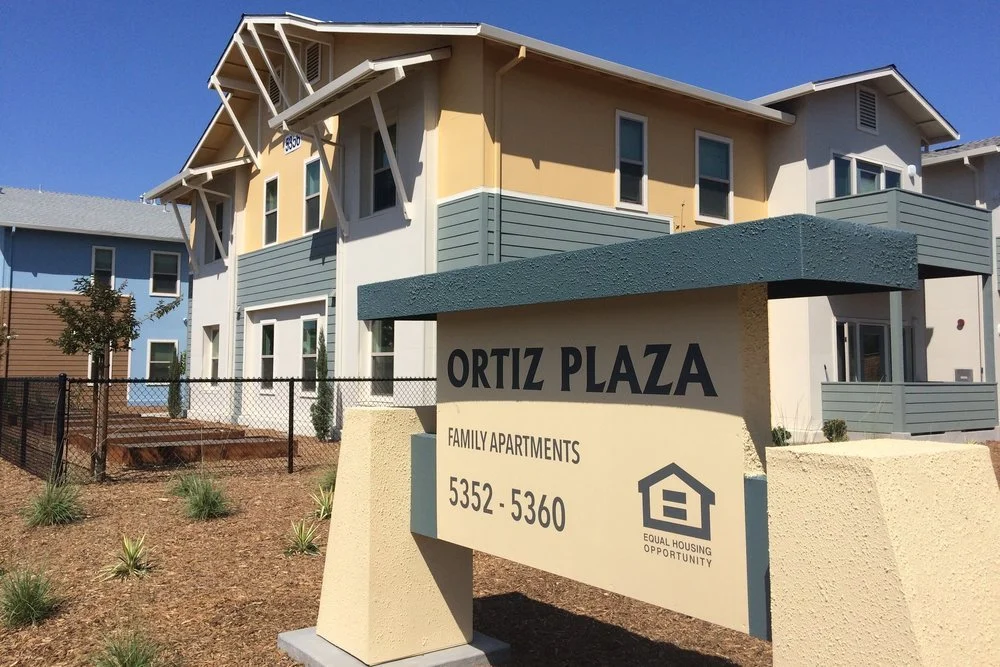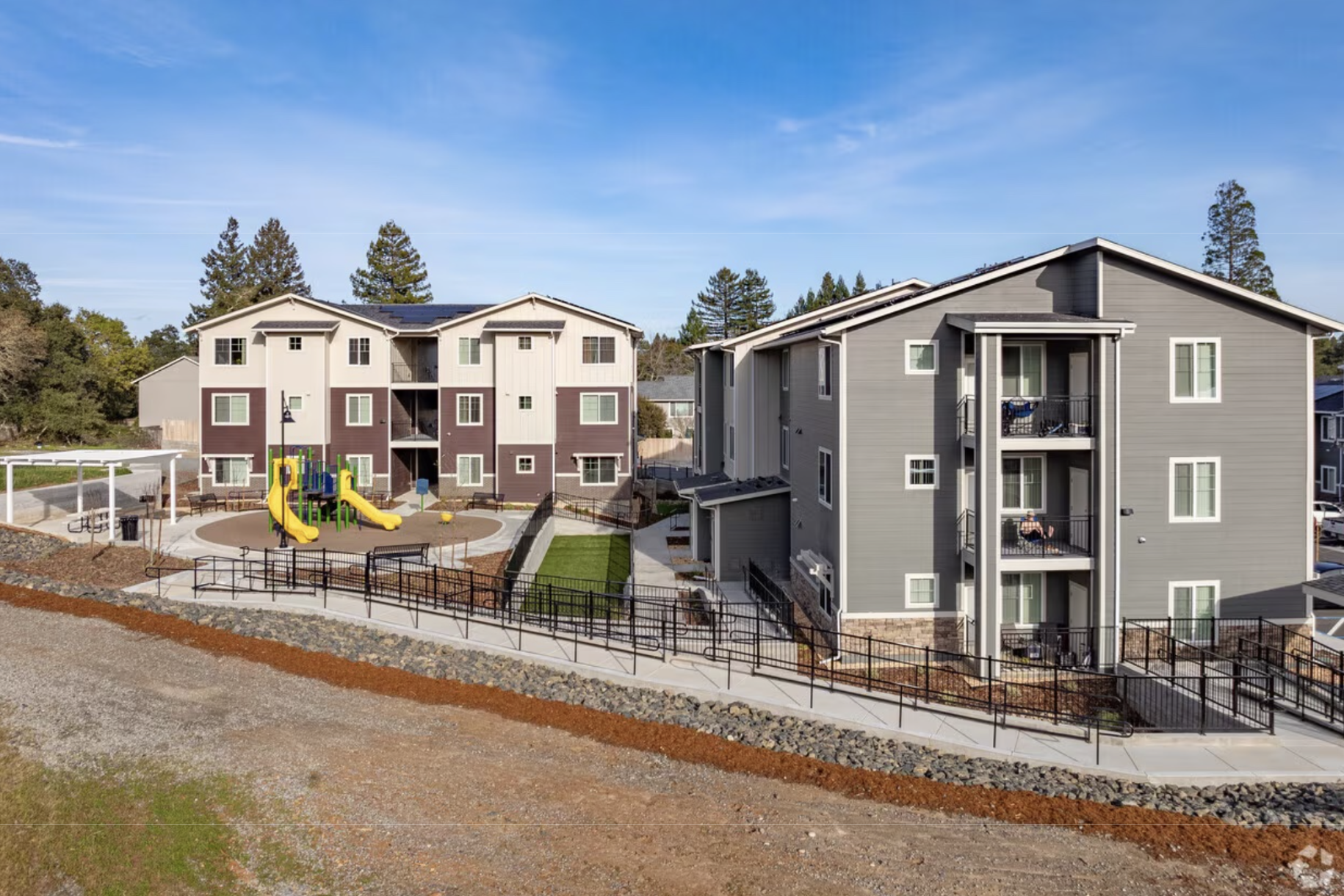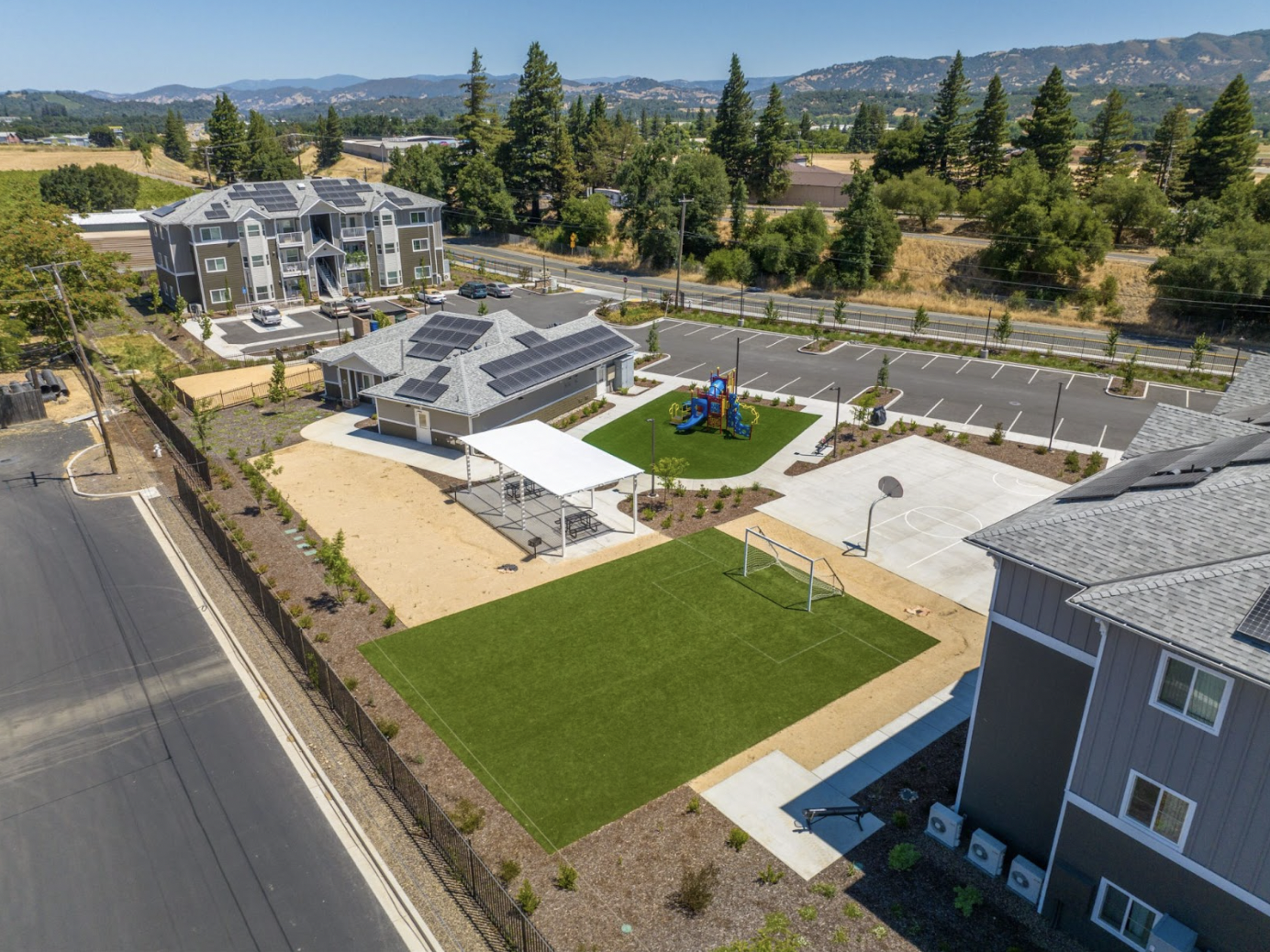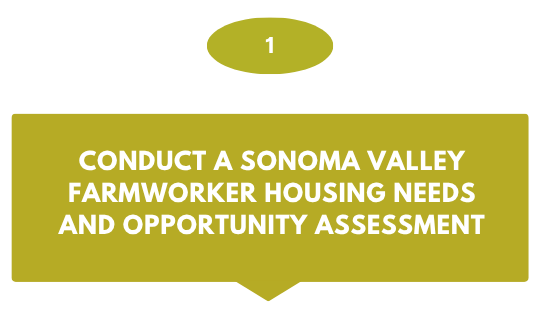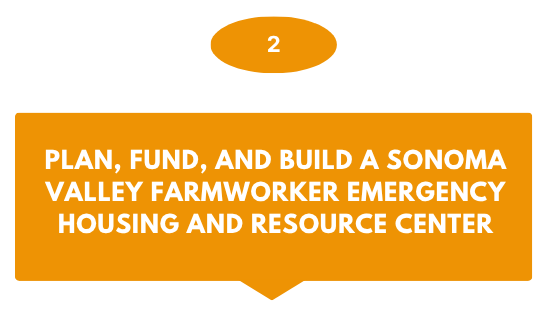Sonoma Valley has thousands of acres of wine grapes, the care and harvesting of which requires thousands of farmworkers. Farmworkers are among the most vulnerable populations in the housing crisis. Farmworkers often live in overcrowded or substandard housing. In fact, one census tract in the Springs has the highest over-crowding in all of Sonoma County, measured in terms of the number of people per room. Farmworkers are also often forced to live far from their jobs, to find affordable rents. This creates compounded problems for farmworkers and the community at large: increased traffic and greenhouse gas emissions, a less stable and healthy labor force, stressed parents and children, and a system that allows bad actors to exploit immigrant labor. Though Sonoma County has recently created some housing targeted for farmworkers, it lacks any systematic plan to house farmworkers.
There are two times of year that consistently create housing crises among farmworkers, leading to temporary homelessness.
Harvest Season (August–October):
During this time, demand for labor surges, but housing does not. Seasonal and returning workers arrive to find no available, affordable housing. Many sleep in cars, overcrowded rooms, or other places not meant for living. Difficulties finding short-term rental assistance worsens the crisis.Post-Harvest (winter–early spring):
During this time, there is less farm work. Many seasonal workers lose their jobs and income, leading to instability and displacement. Families face uncertainty about where they will live until the next season.
There is no Sonoma County data specifically on farmworker homelessness, but in roughly comparable Napa County, more than 1 in 5 farmworkers experience homelessness or unsafe housing annually.
Sonoma Valley urgently needs a structured, long-term strategy to provide both seasonal and permanent housing tailored to the needs of different segments of the farmworker population, including single men, families, and those in employer-provided housing.
In the absence of Sonoma County data or leadership on farmworker housing needs, Napa County’s successful coordinated approach is instructive, even though there are important differences between the counties. For over 20 years, Napa County has charged an assessment on each parcel that contains one acre or more of vineyards. In 2024, the annual assessment was $14 per parcel. The assessment revenue funds three farmworker housing centers (in Napa, St. Helena, and Calistoga) with 180 beds, and additional units in other locations in the county. A video by the Napa Housing Authority shows that each center is physically attractive and well-placed in the vineyard landscape. The assessment also funds other projects to improve farmworkers’ lives, such as literacy programs and child healthcare. The vineyard assessment has been a political success, with over 86% approval from vineyard owners during the last re-authorization of the measure. A coalition of groups and agencies has coalesced around farmworker issues in Napa County to collect data and work on comprehensive solutions.
Napa County Service Area No. 4
With the support of local industry, including the Napa Valley Vintners, Napa Valley Grapegrowers, and Napa County Farm Bureau, the Napa County Board of Supervisors established County Service No. 4 (CSA No.4) in 2002.
In this unique model, vineyard owners with land containing at least one acre of planted vineyards assess themselves to fund the maintenance and operation of the three county-owned farmworker centers in or near the cities of Calistoga, St. Helena, and Napa.
Each center offers 60-bed night-by-night lodging (supporting up to 180 farmworkers nightly).
Data from the 2024 Napa County Farmworker Housing Needs & Impact Assessment (FHNA) demonstrates the benefits of farmworker-specific housing solutions that are likely applicable to Sonoma County. Farmworkers living in dedicated centers reported significantly lower financial stress compared to those renting in the private market. While 41% of year-round farmworkers and 48% of seasonal workers renting on the private market described paying rent as “very difficult,” those figures dropped to 16% and 30%, respectively, for those living in farmworker centers. Additionally, 46% of year-round farmworkers in dedicated housing reported that paying rent was “not difficult”, compared to only 12% of those renting in the private market. These statistics demonstrate that affordable, dedicated farmworker housing reduces financial hardship and prevents housing instability. These are outcomes that could be replicated in Sonoma County.
The FHNA also revealed that in addition to seasonal housing for single workers, there is a pressing need for affordable family housing, particularly single-family homes and multi-unit buildings.
Housing access is complicated by language barriers. Many farmworkers have difficulty with rental applications, lease agreements, and available housing resources due to limited English proficiency. Seasonal workers are more likely to speak an Indigenous language, making them particularly susceptible to hardship in securing stable housing and also in other areas that directly affect their quality of life, such as accessing health care, financial services, and legal protections. About 34% of Napa farmworkers were found to speak an Indigenous language, and this is much higher among seasonal workers (47%) than year-round workers (14%). In total, 17 different Indigenous languages were identified, with the most common being Tzotzil, Tzeltal, Triqui, Tojolabal, and Mixteco.
Current Housing for Farmworkers in Sonoma County
Ortiz Plaza Family Apartments, 30 units in Santa Rosa. Cost to build: $10,587,150, or $353,000 per unit Source: California Human Development.
Woodmark Apartments, 48 units in Sebastopol. Cost to build: $25,000,000, or $521,000 per unit. Source: The Pacific Companies.
Alexander Apartments, 72 units in Cloverdale. Source: The Pacific Companies.
Federally-funded farmworker housing requires farmworkers to have legal status to be eligible for the apartment. This is a downside of federal funding. California has state funding for farmworker housing, which does not require residents to have legal status. Affordable housing projects currently being built are mainly 40+ unit buildings with layers of restrictions and regulations arising from their government funding sources. These restrictions range from legal status of residents, documentation requirements, and income restrictions. If a farmworker family goes over the relevant Area Median Income criterion by one dollar, they are ineligible for the unit.
Recommendations
Gather data on farmworker housing needs and identify viable parcels for development to inform strategic planning and funding opportunities.
Develop a centralized housing and services site using insights from the assessment, with a clear business plan, funding strategy, and development partners.
Collaborate with agricultural landowners on projects for ADUs, tiny homes, or modular housing across sites, securing public and private funding to scale distributed workforce housing.
-
A Sonoma County Farmworker Housing Needs & Opportunities Assessment (FHNOA) would provide crucial data needed to address these challenges. It would help planners, developers, and policymakers determine the most effective housing models, outreach strategies, and support systems to meet the diverse needs of the farmworker community while ensuring equitable access for those most at risk.
The Sonoma Valley Farmworker Housing Needs and Opportunity assessment will utilize quantitative and qualitative research methods to better understand who our agricultural workforces are in the valley, gather data on farmworker housing needs by understanding their current housing situations and identify opportunity zones both for development of housing and specific housing resource needs to inform strategic planning and funding opportunities.
Quantify the number and types of farmworkers (seasonal, migrant, permanent)
Gather data on income, family status, current housing, commute, overcrowding, and housing preferences, resource accessibility, land access,
Identify support service needs like housing navigation, tenant education, and Indigenous language access
Map and evaluate potential parcels for housing using zoning and infrastructure analysis
Guide program and policy recommendations and unlock state and federal funding opportunities for different housing related needs.
-
Building on the findings of the FHNOA, determine site(s) characteristics, permitting requirements, development partners, and capital funding needs based on study results. Napa’s centers are useful models for developing a culturally responsive center–a physical location–to meet urgent housing and service needs. Ventura County and Santa Barbara County also have a working model. The state periodically offers grant funding for these centers. The functions of a farmworker resource center include:
Provide emergency and seasonal shelter
Provide basic life maintenance needs such as showers, kitchens, laundry, lockers, and rest areas
Provide services such as housing navigation, tenant rights education, case management, and Indigenous language support
-
The new mission-driven entity (See Strategy 1, Create a Nonprofit Sonoma Valley Community Development Corporation) can take on farmworker housing as one of several project types or business models within its broader scope and the costs associated with this line of work would vary on project. These projects are uniquely positioned due to the agricultural sector’s access to land, ongoing shifts in the wine industry, and the emerging possibility of transitioning vineyard acreage to more food-based cultivation. The SVCDC and project partners can pursue Joe Serna and other targeted funding to build distributed farmworker housing and resource sites. The SVCDC can bring these housing efforts to life—requiring proactive parcel identification, tailored planning, and access to funding sources specifically suited to the realities of farmworker housing. To succeed, the SVCDC must embrace creative, unconventional approaches that make farmworker housing easier to finance and build, leveraging its role as a convener and catalyst for innovation across public, private, and philanthropic sectors. Some examples include:
Developing ADUs, Tiny Homes On Wheels, and modular homes on farms and scattered parcels
Collaborate with SVCDC and other Community Based Organizations to identify eligible landowners and employers
Pair Joe Serna, CalHome, USDA, and CRA-aligned bank funds
Address zoning and infrastructure challenges through partnerships with Permit Sonoma and housing advocates
Work with local designers/architects interested in creating units that align with the spirit of Sonoma Valley.




